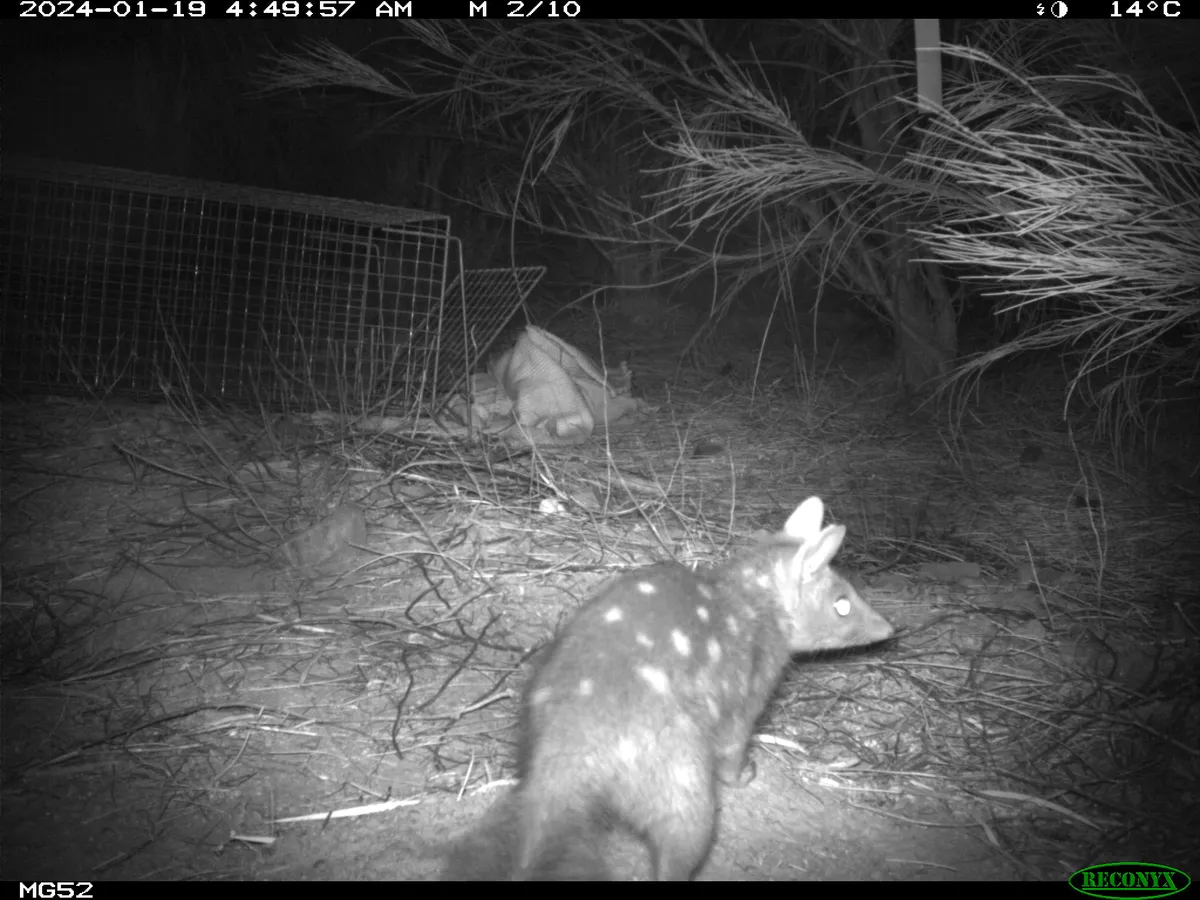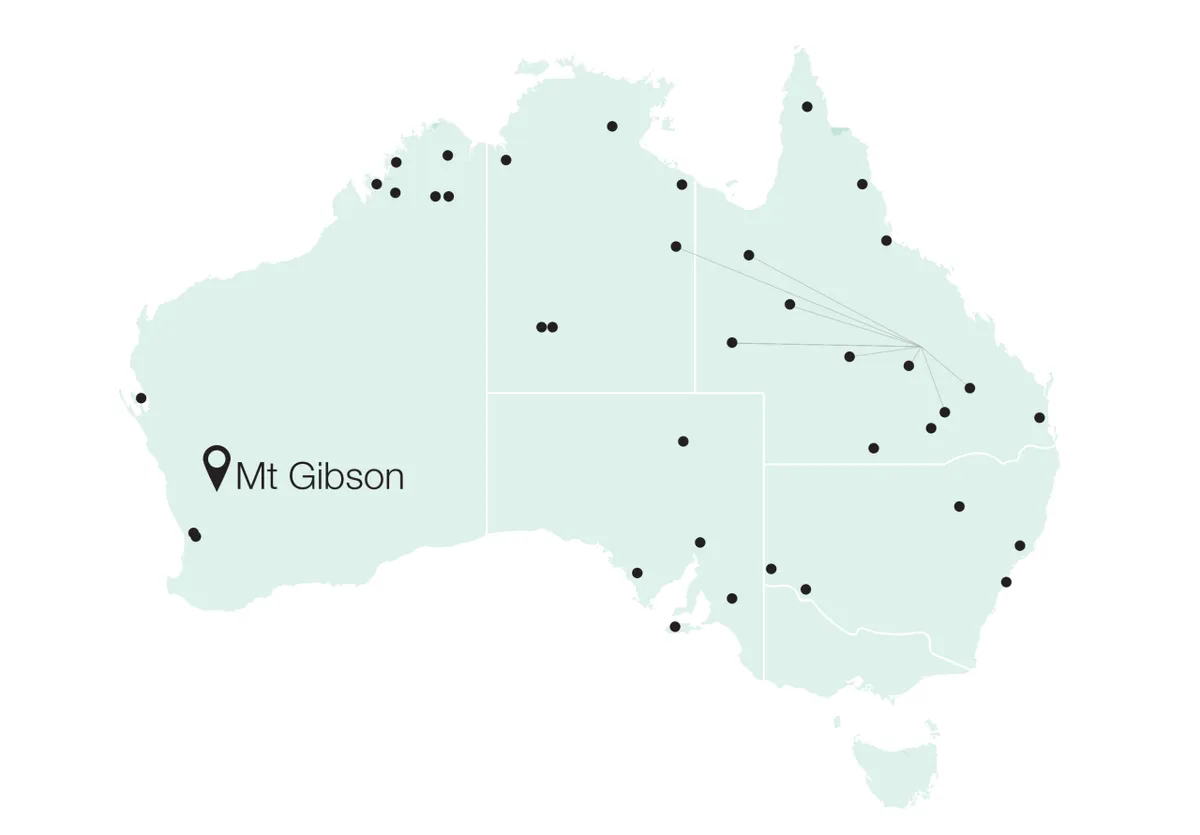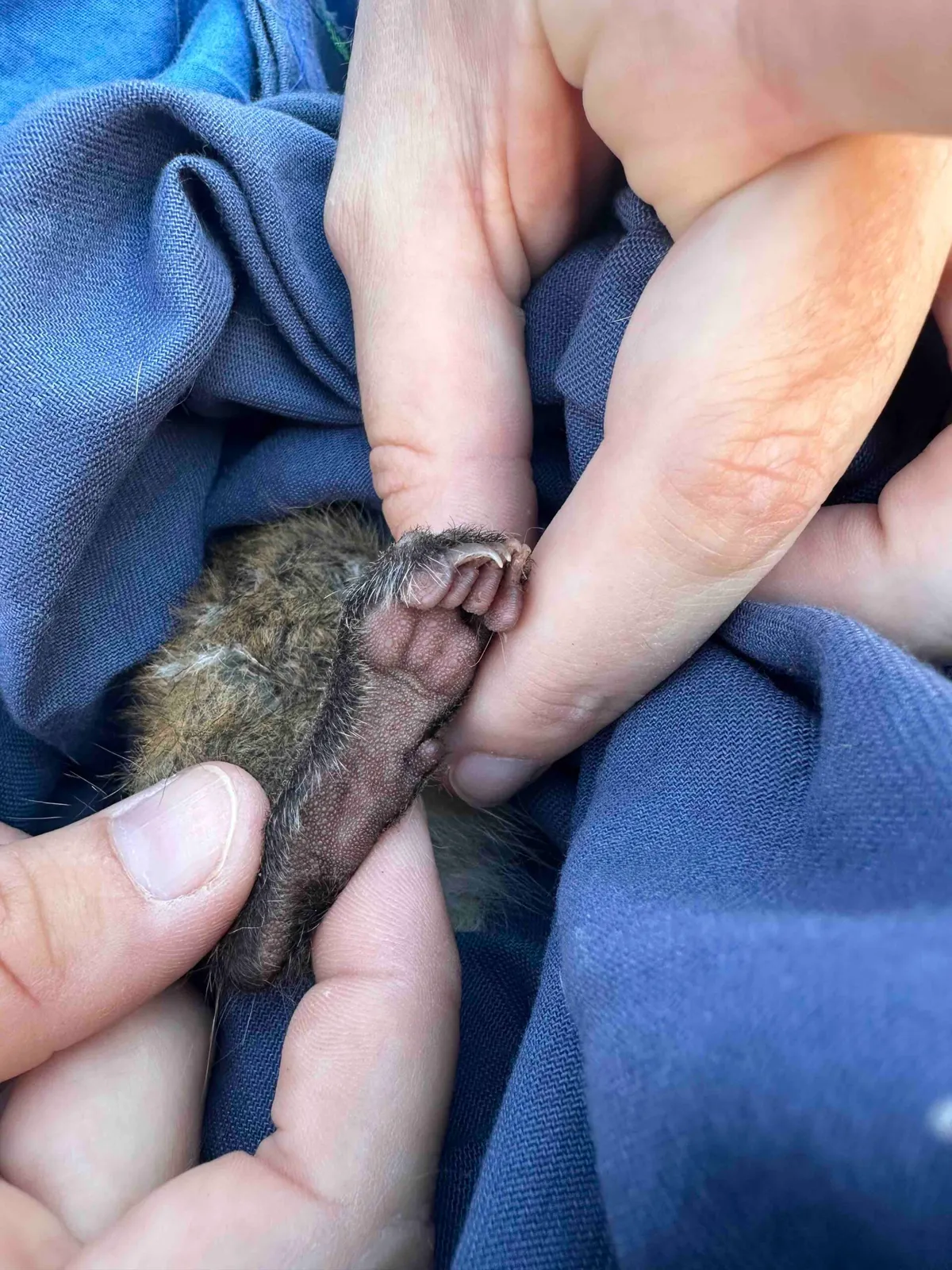Late in 2023, ecologists at Mt Gibson Wildlife Sanctuary in Western Australia noticed something mysterious happening with some of their cat traps.
Keen to catch the culprits, they deployed motion sensor cameras to find out what was going on.
It wasn't long before they had the answer, as the camera footage revealed four small quolls breaking into the traps. The ecologists were delighted – the opportunistic little mischief-makers were juvenile western quolls, the first to be born on the sanctuary in 100 years.

Western quolls caught pink-handed
Western quolls – also known by their Noongar name chuditch – are Western Australia's largest endemic marsupial carnivore. Males weigh around 1.3 kg, and females 0.9 kg – about the size of a small domestic cat. They have brown fur, dotted with distinctive white spots on their back and sides, and their tails are black and bushy.
The western quoll's range once spanned nearly 70% of mainland Australia, but following European settlement this was dramatically reduced. Today, with the exception of reintroduction sites, they are only found in the south-western corner of Western Australia – and even here their distribution is patchy.

So, when the ecologists at Mt Gibson Wildlife Sanctuary – a vast nature reserve on Badimia country in Western Australia’s Wheatbelt – identified the bait robbers at western quolls, they couldn't hide their delight.
“We had a mysterious case of cat-trap tampering whereby the traps were closed, the bait was gone but no culprit inside,” explains AWC Field Ecologist, Erin Barritt.
“We deployed motion-sensor cameras to find out what was going on and sure enough, we found small quolls eating the bait and using their petite size to escape the traps.”
Unable to catch the quolls by hand, the team turned to an innovative ID system, checking their unique spot patterns to confirm their newly born status.
“We suspected that the small individuals may be new arrivals to the sanctuary, and so we compared their unique spot pattern against a reference library of all 45 quolls that were released at Mt Gibson over the last 12 months. It’s a bit like picking out constellations, except the points twist, turn and stretch depending on the quoll’s position.”

The technique of identifying individual quolls using remote cameras was first developed by Dr Rosie Hohnen.
“We compared the images of the four quolls to those in the reference library and were unable to find any matches. That’s how we were able to confirm Mt Gibson’s first sanctuary-born independent juveniles.”
“This is very exciting for the team, as it’s our first evidence of successful breeding to independence for the reintroduction program at Mt Gibson.”
And their names? Ecologists involved in the discovery named them after Australia’s favourite biscuits – Tim Tam, Oreo, Monte and Tiny Teddy. “Fresh out of the oven," says Barritt, "just like our favourite treats.”
Mt Gibson: "An ambitious reintroduction project"
The western quoll is the 10th locally extinct mammal species to be released at Mt Gibson. The first group of 11 quolls were released here in April 2023, followed by another 23 in June and 11 in November. A fourth reintroduction took place in March 2024 , with eight quolls travelling from Avon Valley National Park.
First evidence of breeding came in August 2023, when one female was spotted carrying joeys. The recent sighting of the juveniles offers further optimism that the quolls have adapted to the environment.
Find out more about Mt Gibson Wildlife Sanctuary.
You may also like:
